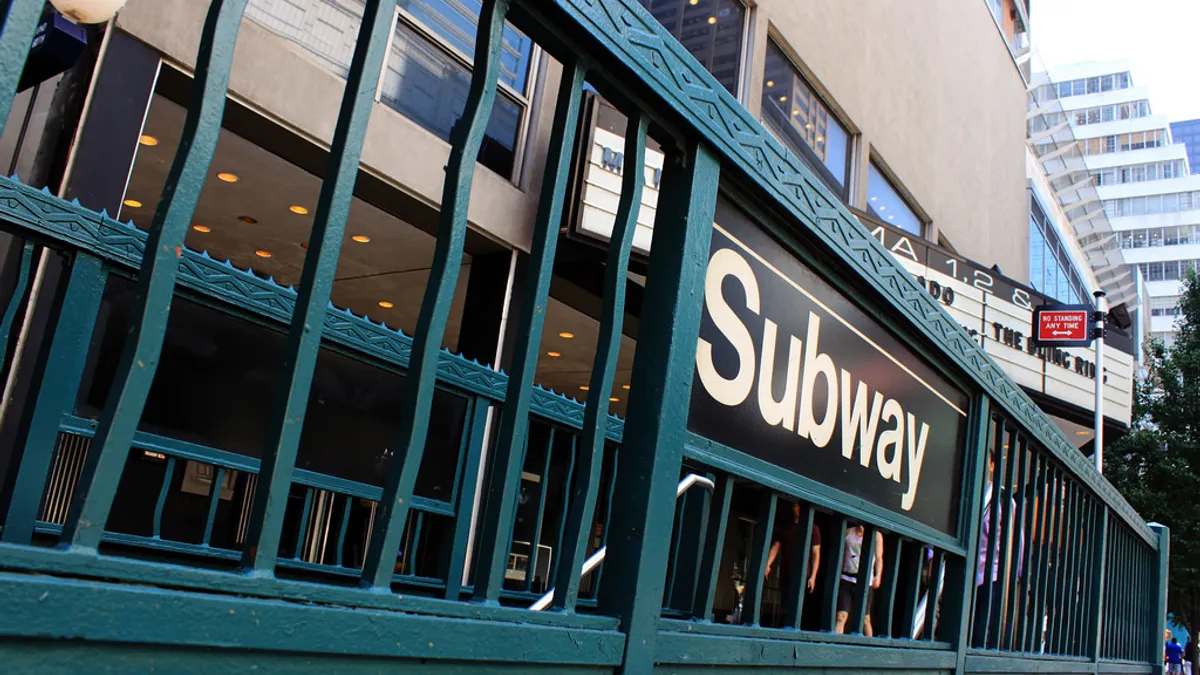Dive Brief:
- Nearly 200,000 disabled New Yorkers live in neighborhoods that lack even a single accessible subway station, according to a new report from the city comptroller’s office. Adding in 341,447 seniors above the age of 65 and 203,466 children under the age of five, a total of nearly 640,000 residents don't have accessible subway stations in their neighborhoods.
- Of the city’s 122 neighborhoods serviced by the subway, 62 of them lack accessible stations, with most of the so-called "transit deserts" clustered in Brooklyn, Queens and the Bronx. Of Brooklyn’s 44 neighborhoods served by the subway, a whopping 68% lack accessibility. Overall, the network has the lowest share of accessible stations of any metropolitan rail network in the country.
- Median rent is $100 higher per month in the accessible neighborhoods, the report notes, a barrier to moving and part of what it calls a "severe strain" on the lives of disabled and elderly citizens.
Dive Insight:
Even for a transit network that ranks top in the nation for access to jobs, the lack of accessible stations is a serious black mark. The inability to reach a well-designed station means disabled residents don’t have a full range of jobs, can have challenges reaching medical care and can have a higher cost of living. A recent Pew analysis of data from the U.S. Census Bureau’s American Community Survey also found a link between disabilities and high poverty rates, something not helped by reduced transit access.
The comptroller report notes that New York City fares poorly when compared to other cities, even ones that were built before passage of the Americans with Disabilities Act in 1990. Boston and Chicago especially have a greater share of accessible stations despite the age of their systems, the report says. Chicago has a goal of making its entire system accessible (the Chicago Transit Authority says the entire bus and rail fleet works for riders who require step-free access) by upgrading and adding elevators and widening platforms.
New York has made increasing access a priority of its five-year repair plan, which could reportedly cost as much as $19 billion. That plan would prioritize 50 stations for accessibility upgrades, ensuring that no rider is more than two stops away from an ADA-compliant station.
Ride-sharing can help fill in the gap by offering riders another alternative, but systems like Uber and Lyft often lack wheelchair-accessible vehicles. Disability Rights Advocates filed a lawsuit against Uber in New York City last year, saying the company doesn’t offer equal access to wheelchair users. New York Gov. Andrew Cuomo called for a task force to study disability access as part of ride-sharing regulations passed last year for upstate New York and Long Island, but critics say the state should do more to actually require more accessible vehicles.











